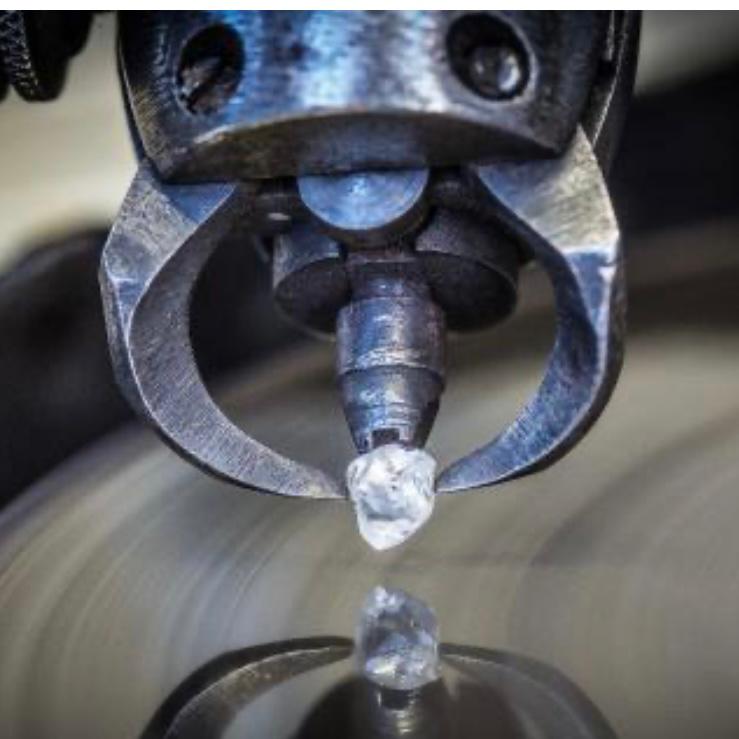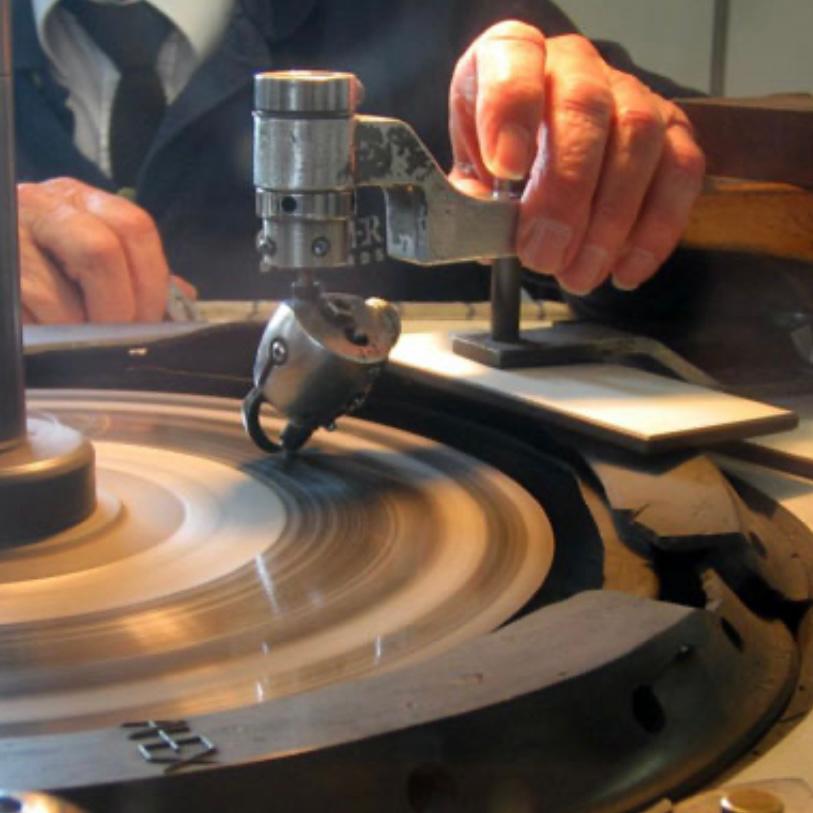
Travel guide to the most famous diamonds in the world.
The summer holidays are just ahead. I hope you have

Have you thought about how colored diamonds are cut, who cuts them, and how much the actual cutting of colored diamonds influence the price?
Here are some of the secrets.
The color of colored diamonds

Many hundreds of years ago, when describing colours, including colorless diamonds and precious stones, nature would be used as a reference point, such as Conchs, birds, spices and even clear water.
We still use the old terms sometimes, and may well call a very pink diamond “rasberry pink” or a very yellow/orange diamond “canary yellow” But GIA, The Gemological Institute of America has set 27 shades for colored stones on a nuance. This has made it much easier to say the color and you have got new terminologies and criteria to standardize the descriptions.
GIA is the grading institute with the most experience in colored diamonds. And they started grading colored diamonds already in the 70s.
Where and how are the colored diamonds cut?
But what is the best way to cut the colored diamonds?
Unlike colorless diamonds, colored diamonds are very often cut to maximize their color, rather than maximizing the reflection of light, clarity and weight as we know it from colorless diamonds.
What is a good cut for a colorless diamond is not always good for a colored diamond.
Retaining the color when looking at the diamond from above is much more important than trying to polish away obscurities. This is also why we accept inclusions in colored diamonds
The diamond’s final size, shape and how the facets are arranged are the factors that have the greatest impact on a colored diamond, and therefore you will almost never see them cut the same.
The larger the diamonds are and the deeper the “pavillion” (i.e. the lower part of the diamond) is, the more light can enter the diamond and be reflected inside the diamond. This will often give diamonds a deeper color.
Steepcut, as we see from the emerald cut, gives the best use of the rough diamond, but it does not always capture the most color, therefore a mixture of steps and facets, as we know from the brilliant cut, is often the most popular cut for colored diamonds. The least popular is the brilliant cut, as it tends to lighten the color upwards on the diamonds, this is also why brilliant cut pink diamonds are incredibly hard to find and that, if they are color saturated, they are much more expensive than pinks diamonds in all other cuts.
Diamond producers are not much for telling their secrets about cutting and polishing the colored diamonds, but I do know some of the secrets that I want to share with you here:
Diamond cutter Mr M
The best and most famous diamond cutter of colored diamonds lives and works in New York, his name starts with M and ends with S. And that’s all we know. The most famous diamond cutter in Antwerp is called John, and is a young guy who loves to improve the color of diamonds.
The reluctance to discuss cutting methods is rooted in the fact that manufacturers make a good business out of recutting a GIA – graded colored diamond and thereby get a better grading and a higher price. The way this is usually done is by changing the way the facets are set, especially around the base of the diamond, sometimes adding some extra facets to enhance the color, before the diamond is sent back to the GIA where it might get a more rare color quality and perhaps an increase in value of towards 50%.
One has to look at the overall beauty of diamonds not just the grading report, which is obviously also important – to set the value of a fancy colored diamond.
To cut colored diamonds you don’t need any special tools, just ordinary standard manufacturing equipment is enough. The most important tool is your eye together with an enormous knowledge of diamonds, and then you naturally have to be a good and experienced craftsman.


Mr. M, the anonymous diamond cutter is often asked to improve the color that was lost when the wrong facet angles or proportions were applied by a less experienced diamond cutter.
.
His expertise comes largely from his experience cutting really many diamonds. And it is common knowledge in diamond circles that Mr. M is asked to cut and polish many of the most valuable fancy-colored diamonds in the world.
So seeing as many beautiful colored diamonds as you can is one of the secrets to training your eye and judgment skills especially if you want to invest in a colored diamond.

The summer holidays are just ahead. I hope you have

What is the market for pink diamonds like? And what

An old mine-cut diamond is reminiscent of the past when

Looking for an engagement ring that never goes out of

What is the actual work process of making a custom-made
During the past years, the use of diamonds as an investment and financial hedging tool has grown rapidly.
The reason is obvious: Diamond prices are always increasing. In the last 10-15 years, there’s been a huge interest in investing in colored diamonds, making prices for pink and blue diamonds rise by 400 %.
Read more about Investing in Diamonds













Stay informed about the captivating world of the diamond industry by signing up for our newsletter and receive exclusive insights and updates straight to your inbox.


Østerbrogade 226
Copenhagen Ø
TLF: 53532277
CVR: 40081321
Belgian phone no.: +32 485 00 58 42
Danish phone no.: +45 53 53 22 77
Email: trine@bylamm.com
![]()